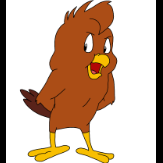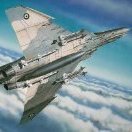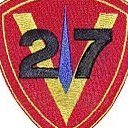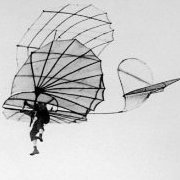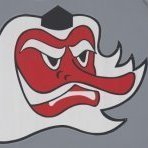Leaderboard
Popular Content
Showing content with the highest reputation on 07/06/2021 in all areas
-

Kittyhawk A/T 28 B/D Trojan finished, addendum
Daniel Leduc and 12 others reacted to chrish for a topic
Sticking a fork in the Trojan and calling it done. some pics of the finished model as it sits tonight. Thanks to those who encouraged along the way and to everyone who stopped for a look!13 points -
RAF FG.1 XV571 WILD HARE Phantom Conversion
Spooky56 and 10 others reacted to Anthony in NZ for a topic
Thanks Ali, means a lot coming from you! Funnily enough, your name came up in discussion over the phone last night with Kerry, you'll probably know why after seeing this update Absolutely....did I say a must have. Clearly I am in awe of them All final finishing is done on the reheat cans and I am happy to say they are a close to perfect and accurate as we can get them. Still another 'tweak on the 'ramps' but we're getting close Inside The cans tuck up in the back like this, Photo Credit Julien (Walkaround coordinator on BM) Here is mine in place, sitting a touch low still Should be closer to this, but easy to fix, a touch more sanding along the top of the opening should tuck it in closer to this, this is a tiny bit high I think, but just placed in here to illustrate And a slightly different angle. Important to note that there is still a titanium edging to go around the edge of the airframe, slightly overlapping the edge of the can. This will fill the gap between the 2 parts and tidy it all up. This illustrates how I still have to 'tuck' that engine up about another 1mm Oh well, back to surface details, this was a nice diversion Cheers Anthony11 points -
A long term conversion: 1/32 Cobra
Anthony in NZ and 9 others reacted to docdodj01 for a topic
So I've decided to start a long term project. As an introduction: Our country just recently acquired AH-1F from Jordan, which were ex-IDFs. So I decided to try and build on in largescale. I am using the very nice Werner's wings conversion set. Now, this set was originally for the ancient revell 1/32 AH-1G. With the recent release of the ICM cobra, I decided to try and see if this will be doable. Here's the current fit. It fits! But still, with the degree of cutting off fuselage sections, I have to go at this, slowly and surely. Hence the reason why this will be a very long term conversion. And who knows? Maybe by the time I'm almost finished with this, a newly tooled TOW cobra maybe out by then.10 points -
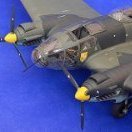
Short Sunderland MkII
Sharkmouth and 9 others reacted to tomprobert for a topic
Afternoon all, Progress has lowed a little of late due to work: marking exam papers and end of term reports have, sadly, taken priority! Anyway, I've been slowly getting the upper wing surfaces scribed. Dymo tape is used for the more complex curves, with a flexible metal ruler for the rest: I've also, once again, left the wings in their backing sheet for increased rigidity. Fuel tank covers still to be done, but I'm trying to work out the exact shapes of these as I don't think the plans I have are quite right: The next task will be to get the wings cut out, sanded to shape and added to the lower surfaces already attached to the fuselage... Stay tuned! Tom10 points -
small update .. cockpit installed and fuselage closed! just a question about the rear compartment.. the revell includes a battery box instead the flat panel for the late version, on the other hand eduard cockpit does not include a battery box compartment of the same version .. i am not an expert in 109 variants but is this right? or only the AS versions had the battery box installed? there are so many variations and modifications .. . dry fitting of firewall and engine and dividing the space between them , so that the engine meets the front end of the fuselage.. i don't know it may works this way.. i didn't face any problem with the exhausts10 points
-
Some more progress, and one step back............... I have finished adding rivets to the fuselage so it is time to glue on the engine pods. However..... I got the pods on and they are not even. As you can see one is farther back than the other. Crap! So, I have had to pull one off and move it forward. Can't believe that I got this wrong. Plastic is rather thin and I was worried that I would seriously damage the fuselage. But I was able to remove it with minimal damage. Anyway, here are some overall shots. Masking has been removed from the walkways. A grey panel has been added to the top of the central engine fairing. Overall shot of where I am now. Stay tuned, Dan8 points
-
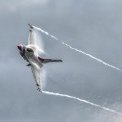
Trumpeter Su-27 ‘Flanker’. Ukraine Air Force.
LSP_Kevin and 6 others reacted to Stokey Pete for a topic
Good evening all. May I present to you, my big Sukhoi Flanker. I acquired this monster kit from fellow LSP’er @LSP_Ray sometime last year. It came with pretty much all of the aftermarket bits and bobs available from @Zactoman , Aires, some Reskit exhausts, to which I also added Foxbot Decals and digital camouflage painting masks for the finish. We all know the kits shortcomings, and we all know how exquisite the resin ‘fixes’ are. I’ve done nothing more than add the resin parts to the build, with no modifications other than is necessary to make them all fit neatly. I’ve built this with it being attractive, as opposed to it being totally accurate. The build was pretty straightforward, but following my own order of construction to save me work later down the line. Many hours of sanding and dry fitting gave me a relatively tidy seam finish all round. Painting has been exclusively done with MRP paints. Weathering done with a mix of oil paint washes of various colours, some very light panel lightening and dirtying up in random places. Metallic areas are all MRP metallic paints, with a bunch of pastels used randomly inside the exhausts. I can’t recommend the Foxbot masks and their decals highly enough. But lots of care and time must be taken with them, they’re extremely delicate and things can go wrong very quickly if one rushes. I had many a test piece of old kits to try out all the things I wanted to do with the final finish, just to make sure it all worked without a hitch. The photo’s are the best I’m afraid. I only have a compact point and shoot camera to use these days, rather than when I had DSLR kit and a studio space. Enjoy.7 points -
The cans tuck up in the back like this, Photo Credit Julien (Walkaround coordinator on BM) Be a little careful with these types of image Anthony, as the majority of preserved Phantom airframes in the UK do not have engines installed, so those exhaust shrouds are effectively 'loose' and may not quite accurately represent the actual positions they would be in if they were attached to an engine and jet pipe! (although this one does look fairly close). probably slightly less 'tucked in' (almost parallel in fact). In terms of how far in or out it should be, you can see a slight variation in all of the photographs (even though they are all FG.1 aircraft). The shroud does moves fore and aft depending upon the selected power setting, so there may be some variation here due to shut down position, hydraulic pressure dissipation, etc. This is a measurement from an FGR.2 aircraft: Cheers Derek7 points
-
1/32 Me262 A-1a Red 7
KUROK and 5 others reacted to David Mooney for a topic
Hello all, i hope you have been keeping safe. I decided to do another one of Trumpeters Me262 A-1a's knowing that some of the issues could be fixed. As many are probably aware the weapons hatches on the front are pretty poor in shape and form, so this was addressed and hopefully look pretty decent this time. EagelCal decals were used for this aircraft plus Quickboost seat and Brassin wheels. Paints used were C117, C121,C122 all from Gunze. As ever, please feel free to comment on the build even if you think there could be improvement's Thanks for looking!6 points -
Werners Wings 1/35 USCG HH-60J / MH-60T Jayhawk Conversion and Decals Coming Soon!
Landrotten Highlander and 4 others reacted to seiran01 for a topic
Since Floyd isn't a member here (or he is but rarely logs in), I offered to share his news from his Facebook post. "Sneak Peak: HH-60J/MH-60T Conversion for the Kitty Hawk HH-60H. CAD done by Mike Swinburne and decals done by the faithful Mason Doupnik. Hopefully coming to the IPMS/USA National Convention. A lot of things have to align to make this happen. Fingers crossed" I'm really excited for this one! Floyd got me roped in to do the CAD designs for the new parts; someone else had already designed the radome and short fuel tank. Some parts are not shown in the attachments including a fully new control panel for the -T, parts to add to the existing kit panel for the -J, the older style flir dome and SX16 searchlight. Maybe additional items if needed too.5 points -

New Quinta Studio's releases!
TankBuster and 4 others reacted to Quinta Studio for a topic
Hello! Here's the new 1/32 scale releases: F4U-1 Corsair (Bird cage) 3D-Printed & coloured Interior on decal paper (for Tamiya kit) Article: QD32015 Price:16€ Available to buy on: https://quinta-studio.com/en/product/331/ https://www.ebay.com/itm/164945175165 https://www.etsy.com/listing/1032924432 F4U-1A Corsair 3D-Printed & coloured Interior on decal paper (for Tamiya kit) Article: QD32040 Price:16€ Available to buy on: https://quinta-studio.com/en/product/332/ https://www.ebay.com/itm/164945179926 https://www.etsy.com/listing/1046882663 Spitfire Mk. II 3D-Printed & coloured Interior on decal paper (for Revell kit) Article: QD32043 Price: 18€ Available to buy on: https://quinta-studio.com/en/product/333/ https://www.ebay.com/itm/164945182155 https://www.etsy.com/listing/1032925856 Spitfire Mk. IX 3D-Printed & coloured Interior on decal paper (for Revell kit) Article: QD32044 Price: 18€ Available to buy on: https://quinta-studio.com/en/product/334/ https://www.ebay.com/itm/164945183566 https://www.etsy.com/listing/1032926434 \ Fw 190F-8 3D-Printed & coloured Interior on decal paper (for Revell kit) Article: QD32062 Price: 16€ Available to buy on: https://quinta-studio.com/en/product/335/ https://www.ebay.com/itm/164945185165 https://www.etsy.com/listing/10329271165 points -
Yes they are decals, printed them myself, but it was 'hard work' the get them to settle. Next time I will use my masking method for the floats. Some last detailing: Wing fuel tank. Compass The wings are finally done, I had to do them twice because I had an accident with some 'alcohol'. I'm quite happy with the end result being 'prototype' decals and all... Cheers: Kent5 points
-
with the Fury done, the bench cleared, I am looking at whats involved in restarting this one.. I got quite a bit done really, and have the PE already so it would be like a flying start as opposed to starting something from nothing Peter5 points
-
Hi everyone So, an actual RFI post from me - quite a rare thing, though I notice I started this model in October 2020 so 10 months is not bad for a scratchbuild I guess..... the benefits of lockdown right This Fury was lost in a midair collision with K2901 on 17th December 1937 near Rowlands Castle, Hampshire. Both pilots, Flying Off (Acting Flight Lt) Harry Hamilton Peck (aged 26) and Sgt Robert Edmund Patten (aged 26) were killed. One day i hope to display it in Tangmere Museum as a memorial to them. It is scratchbuilt, with a vacformed fuselage and rib & spar flying surfaces sheathed in thin scored plastic card.. ..anyways, enough waffle and on with some pics... I learned loads and I have to say really enjoyed making this one - a first for a full scratchbuild and my first biplane gives me a lot of confidence to tackle other subjects and I had a lot of support from folks on the way - in particular everyone who encouraged me in my WIP and Tigger & Radu for help with the vacforming & masks I needed, and Glijn (Lightpainter here) for some invaluable guidance & refs for the airframe this is how we choose to remember those who lost their lives in the service of their country until next time Peter4 points
-

1:32nd scale Mosca-Bystritsky MB bis fighter
Trak-Tor and 3 others reacted to sandbagger for a topic
Hi all, The linen decals have now been applied. White primed base coat, polished then pre-shaded with 'thinned 'Tamiya' Smoke (X19). The decals were cut from a sheet of the ‘Aviattic’ Clear Doped Linen (CDL) bleached (ATT32044). The Russian cockard decals supplied in the kit are ink jet printed and not 'cookie' cut. Typical of these type of decals, that are very easily surface damaged, before or after application. If possible, I'll probably airbrush the cockards using templates - we'll see. Mike4 points -
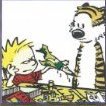
Tamiya F-4B Phantom Conversion (Finished! 25 Sep)
JeepsGunsTanks and 3 others reacted to easixpedro for a topic
Thanks! For the wash, it's Vallejo black. I just brush it on, then use a piece of 000 steel wool and it comes right off. The steel wool also helps smooth out the plastic. Thanks Jari! Somewhere I've got this pic in color (its Glorious!) This plane is a replacement for the 205 I'm planning on doing, which was lost on Kitty Hawk's first line period of the 67-68 cruise. They did 61 or so days on the line covering Khe Sanh and Tet as well. First carrier to win a Presidential Unit Citation since WW2. Cool thing about the replacement though...all that glorious orange! I've even seen their planes in mid-paint, with the orange stripe but not the fancy tail. On another note, I forgot to mention this when showing the flap details. Do yourself a favor before making the cuts on the wing, and measure where the cross brace is in the gear well. With a little planning, your seam will be hidden. Managed it on the first and plumb forgot about it in the month break I took. Photo to illustrate...the seam isn't too bad, and frankly won't be seen unless someone uses a dental mirror, but I know it's there! -Peter4 points -
Hello guys! i am starting a new project ; another me 109 g6 with some extras.. i haven't decide the paint scheme yet, i am still looking for some interesting G6 profile i will use in addition: eduard brassin engine eduard brassin cockpit eduard g6 wheels hgw seatbelts painted insignia master brass mg 131 thanks for watching! m and here is the engine so far the final lines cables and hoses will be done after the engine is installed on the fuselage . have cut off the machine gun barrels and i will replace them with the brass-ones from Master at this point i have decided i wanted the engine to be fully exposed , so i cut off the upper cowling of the fuselage completely.. then i realized that the front end of the engine doesn,t meet the front end of the fuselage as it suppose to do in real aircraft (am i right?.. i have to figure out how i am going to fix this now...3 points
-
3 points
-
A long term conversion: 1/32 Cobra
scvrobeson and 2 others reacted to docdodj01 for a topic
I may paint it in the marking used here, the Philippine Airforce. But am leaning towards the other markings included with the decals. :-) Again, we'll see.3 points -
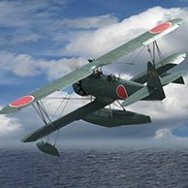
F6F-3 Hellcat [Trumpeter]
Alain Gadbois and 2 others reacted to denders for a topic
Closed up the fuselage. I thought I had the gap taken care of too. Ah well.3 points -
New - in colour! Richard3 points
-

Kittyhawk A/T 28 B/D Trojan finished, addendum
themongoose and 2 others reacted to chrish for a topic
I've been splashing some paint here and there; All paints are Tamiya acrylics over Alclad lacquers (just for the weathering) Thanks for looking3 points -
1/32 Tamiya F-14B VF-101
Nikola Topalov and one other reacted to Gansolino for a topic
Hi guys! Been a member for a LONG time, but this is actually my first post! Hope you like it! This is the ancient Tamiya 1/32 F-14A from 1994. This was a 9 years build, but to be honest about 8,5 of it was as a shelf queen, because it drained all my mojo.... Anyway, enough excuses.... Kit: Tamiya Scale: 1/32 Extras used: Technics F-14B airframe conversion, Trumpeter Laser Guide practice bombs and TER, Fightertown decals and LOTS of scratch Paints: Tamiya, Mr. Hobby colors, Vallejo Metal Colour, AK Xtreme metal Weathering: Abteilung 502's, Flory models wash Hope you liked it!! SORRY for the looooooong post!!2 points -
Hi all, This is my Lancaster nose section. Straight out of the box, only the Eduard P/E for the cockpit and dials is used (because they were not included on the decal sheet!) It was a nice build, but the lack of knowledge about WWII bombers (or planes in general) stopped me with putting in extra details. But they are hard to see anyway. I hope you like it! With regards, Rob P.S. the fingerprint (which is probably my thumb) isn't really visible in real life!2 points
-
XB-51 Dragon
Dandiego and one other reacted to adameliclem for a topic
Dan, this is flat-out stunning. You must have nerves of steel to rivet over a finished metallic surface. Wish I could see it in person. Rock on. Cheers Adam2 points -
I hope they pay better attention to shapes and proportions and leave panels closed, but with the possibility of cutting them open for those who are into that thing. Oh, and better customer service for missing and broken parts too...2 points
-
What a stupendous effort so far, Dan! It really looks amazing. Kev2 points
-
RAF FG.1 XV571 WILD HARE Phantom Conversion
Greg W and one other reacted to Anthony in NZ for a topic
Thanks Peter, Hmmm, that's an interesting point, dont they call that Mil Power when they are closed? Either way it will look awesome buddy! @Derek B That's some brilliant information. I had no ideathose cans could be so lose without the engines fitted, I can see a little difference now when they are fitted...thanks you're a lifesaver! I still have to deal with the shapes a little and figure out how to replicate that louvered panel. But I think I might wait until the lower wing is on when I can tidy that all up Glad you're enjoying it Andy...this is for you too buddy! Thanks again everyone, really appreciate everyones feedback Cheers Anthony2 points -
Those cans look great, can't wait to see them painted, Derek, you're a star, all this priceless information. I hope you do consider producing a KLP book - The definitive guide to building a British Phantom.2 points
-
Mengnut Wings Fokker Dr. 1
scvrobeson and one other reacted to sky for a topic
Matt, they are part of the regular Aviattic decals for the Mengnut kit. Have a look at the images for the ATT32295 decals. You'll see the burnishing decals left of the rudder there. I'm not sure if there is an individual decal available just for that, but I believe I have seen it being a part of all their Richthofen decals for the Mengnut kit. Wolf, this is yet another build that will go into my reference build archive folders. Just the engine shots alone hit it right out of the park for me and the rest with all the details of what to look out for or how to fix is very much appreciated . Looking forward to the next installment!2 points -

1:32nd scale Mosca-Bystritsky MB bis fighter
Trak-Tor and one other reacted to sandbagger for a topic
Hi all, The pre-shading has been applied to the fuselage, wings and flight surfaces. I've attempted to represent the engine as best I could, given that the kit supplied moulding is the worst I've seen. The single piece engine is misaligned so there is a step at each side of the cylinders. Only 6 inlet manifolds were in the kit, there should be nine (replaced with spare 'Roden' manifolds). No valve gear or push rods or spark plugs either. The kit engine had to used as no other replacement engine would fit inside the engine cowl. In fact I had to remove the top of four cylinders to get the kit engine to fit (the can't be seen in the cowl). I've used the resin propeller in the kit but replaced the centre boss plate with a spare 'GasPatch' part. I've discarded the kit supplied wheels and replaced them with 'GasPatch' spoked wheels. Mike2 points -

Kiwi Corsair - Finished
themongoose and one other reacted to mgbooyv8 for a topic
Hi guys, I decided to buy some Gunze Mr Mark Softer NEO to see if this improved the results with the HGW wet decals: Errr... No. What is clear from the pictures is that the white ink sticks too much to the carrier film. As a result, flakes of white ink are taken away from the surface, especially from raised detail, when removing the film. Touching up the white will be required on the upper wing roundels als well. Tonight, the fuselage has been decalled. Here is a shot of the starboard side: Some decals are located on a smooth and very glossy area. I hope this helps keeping the white ink on the surface. I don't fancy touching up an irate Donald Duck! Tomorrow I'll find out. The decals need to dry 5-8 hous before you can peel off the film. Fingers crossed. Cheers, Peter2 points -
Anyone with Revell Insight?
coogrfan and one other reacted to Reuben L. Hernandez for a topic
Man, if Revell ever decided to re-mold the P-51B, up to their latest standards. They can print their own money. Imagine, a great fitting kit, with a decent detailed cockpit and decals at an affordable price. Holy crap, they can roll in the armoured trucks.2 points -
Well, there it is. A problem shared Now I can get to grips with establishing a sound method of attaching the wings to the fuselage. A problem entirely of my own making of course, since you may recall that the kit had a single piece lower wing. Part of the challenge, as with the wings, is the absence of structure to hold the airfoil shape in place. This has caused many difficulties with the wings in particular as they tend to squeeze and crack when being worked on. All part of the engineering challenge, and we do this for fun after all - don't we? I had to pause work on the wings at this point as I wait for the etched slat-tracks to arrive. A good time to address the main gear, which is very basic in these old kits. The Hasegawa legs (the lower ones) have nasty ejector pin marks, and the wheel axle in the centre of the leg. As per the Kinetic legs (above), the axle is offset in a trailing position on the leg. I would have preferred using the Kinetic legs, but the mounting pin is just not compatible, and not something I like to compromise when modifying a kit. Here is an improved leg, and some of the components (including the torque-links) that were made from stryene pieces. The Hasegawa wheels are ok, but the side facing the leg could be improved. The Kinetic hub looks much closer to the real thing, so I opted to use it instead. The Hasegawa brake drum is nicer to my eye, and is easily upgraded. Here the final product... Back to the slats shortly. Cheers, Sean2 points
-
Mengnut Wings Fokker Dr. 1
109 and one other reacted to Wolf Buddee for a topic
The cockpit assembly was press fit in to the left side fuselage half. Then the two fuselage halves were glued together trapping the cockpit assembly within. I glued the top seam first making sure I had aligned everything perfectly to ensure I had very little filling or sanding to deal with. Once that was completely set I fit the center strip with stitching detail in to the recess in the bottom of the fuselage and ran Tamiya extra thin glue along both edges. It took a bit of fettling to get the center strip to sit level as I could get it but it became obvious that filler was going to be needed to get a nice clean finish. The fuselage bottom, towards the rear, also had some rough depressions right between where the ground handling loops protrude which required filling and a good bit of sanding to eliminate. So far this was the only real rough spot on the kit and if I was to do it again I would sand the whole thing completely flat and use Archer’s fabric stitching decals to finish it off. The engine firewall was press fit in place to make sure the front of the fuselage was aligned properly. It won’t be glued until the landing gear and upper cabane struts are rigged and tensioned. This will make sense later on. I also added a thin strip of styrene to the fuselage where the horizontal stabilizer fits as the gap between it and the fuselage was too big. There is supposed to be a small gap there but not as big as what dry fitting showed. Cheers, Wolf I2 points -
1/32 Infinity Models SB2C-4 Helldiver
dutik and one other reacted to monthebiff for a topic
Some more progress with the tail fillet now detailed and completed I've found that with this all now now in place the fuselage halves align quite nicely now. Turning my attention to the cockpit I started with the pilots seat which is much like most of this kit having very soft detail. After studying pictures I decided a much better alternative would be to modify a Barracudacast P-51 seat whichooks a whole lot better. I added some piping detail to the headrest and oxygen hose which appears to go through the canvas covering behind the pilot. So a picture with the kit seat installed And with the modified resin seat in place So far so good and next up is the instrument panel. Regards. Andy2 points -

Kittyhawk A/T 28 B/D Trojan finished, addendum
Rockie Yarwood and one other reacted to chrish for a topic
Thanks for the encouragement! I spent the day in the hobby room hiding out from record breaking heat wave (40°C) Some of you are used to it, may even think that's mild but that's hot for Saskatoon. Thank goodness for A/C I spent some time detailing painting and sticking weapons and landing gear together. Thanks for looking2 points -
1/32 Infinity Models SB2C-4 Helldiver
Paul in Napier and one other reacted to monthebiff for a topic
Once again modelling time has been very scarce but managed a good few hours today, finally! I started by adding all of the internal detail parts to each fuselage half and then worked on getting the replacement plastic card internal tail fillet in place. I replaced the awfully moulded plastic rods on the rack with Albion Alloy tube of a suitable diameter. Far quicker, easier better looking than trying to clean the plastic up! I have some decent reference pictures now so will start to try and improve a few areas on the fuselage internals. Regards. Andy2 points -
That's awesome, Chris! Kev1 point
-
Live Resin sales in the UK/EU very hard to get…..
John1 reacted to Dave Williams for a topic
This is the Live Resin online store. https://models-hobby.com1 point -

Tamiya F-4B Phantom Conversion (Finished! 25 Sep)
JeepsGunsTanks reacted to easixpedro for a topic
Ok gents, did some research last night while hunkered in the basement with the dogs (the neighborhood does its best to recreate the battle of Hue City or Fallujah, take your pick). First up, ran across this photo on the interwebz. This is the scene in my head! Next, I found this pic Lots of details jump out at me...supposedly taken in April 67, during Kitty Hawks 66-67 deployment. That jibes, and is likely early April. I say that because after a short port call, VF-114 went to air-to-air rolls. (Remember I have their squadron history, which is useful for research like this). Check out the different antenna configurations...jet in the foreground doesn't even have RWR gear! That jet would be lost on 21 May 1967 with Denny Wisely at the controls. If you recognize the name, he bagged 2 a/c on this cruise, the first of the war. He's got a great autobiography that I highly recommend: https://www.amazon.com/Green-Ink-Memoirs-Fighter-Pilot-ebook/dp/B079DDZQJ6 His RIO was Jim Laing, and this was his second ejection in less than a month! Here he is punching out after the first strikes against the MiG base at Kep. They'd just bagged a MiG-17, but were hit by AAA and losing a bunch of fuel. A year later Laing survived this. Their Phantom lost a main mount and plunged over the side. His pilot ejected and he tried, but the seat failed and he climbed out of the sinking Phantom. He was 23 at the time and had survived all that! Following this tour he helped start Top Gun. But back to the build...I think I'm gonna build 205 in the 2nd pic. Oddly enough that jet was lost in December 67--the Kitty Hawk had left the Tonkin Gulf and was already back on Yankee Station! I'll have to build out the RWR fairing on the tail. Some other details in that picture. There's no stiffener plates on the wing above the main mounts. Also check out the different styles of the Aardvark on the fin cap. Rhis is before their transition to really gaudy markings with the orange fuselage stripe and bigger Aardvark on the tail. Plenty of other details to highlight when I get to it...more soon! -Peter1 point -
RAF FG.1 XV571 WILD HARE Phantom Conversion
HerculesPA_2 reacted to Anthony in NZ for a topic
Great stuff, there are some lovely photos there....almost makes me want to do a RN one! Still plugging away on the surface details on the starboard center section when I got a nice surprise in the mail today... These are the clear cast parts to @Ali62 revised canopy set (there is also a bag of internal framework and sills etc)for the Tamiya Phantom. All I can say is WOW! These are beautiful and if you have a Tamiya Phantom in your stash, then you NEED one of these. Especially thanks to Rick @Spooky56 for sending me 2 sets. Thank you sir! I hope I only need the one LOL Right-O back to scribing and riveting..... Cheers Anthony1 point -

Kittyhawk A/T 28 B/D Trojan finished, addendum
Rockie Yarwood reacted to chrish for a topic
finally got the furniture moved into the office and paint touched up. Next up is the canopy and windshield. Thanks for looking1 point -

Cello Metal
N.H.71 reacted to ShelbyGT500 for a topic
Hi friends Here I will show something different from airplanes or armor vehicles. This is the figure inspirited by famous cello player Tina Guo. So the figure is 1/6 scale resin. I add a lot of reworks and scratch, as always. The cello I made from wood and plastic sheet and profiles. The strings are fishing wires - another great hobby by the way. The paints are tamiya acrylics and aqua pencils. So here she is and hope you will like her: Thank you for stopping by and as always - Cheers guys1 point -
I've looked through two dictionaries and a thesaurus, and I've found no words to adequately describe how good this is.1 point
-
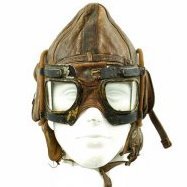
Matchbox 1/32 Bf109E-3 Resurrection
Paul in Napier reacted to turbo for a topic
So at this stage the scheme is not terribly well integrated, with the white in particular looking pretty stark despite the scale shade and pre-shading. I'm going to attack this issue first with a filter. A filter's probably normally considered a painting technique, but I often use it as both this and also a subtle weathering effect. Here I've decided to use a grey/green filter (diluted Mig AMMO winter streaking grime) which should help tie the RLM02/71 camo colours together and dull the white down with a slightly dirty look. I stopped half away across the white wing tip to check the effect. A filter can be a bit alarming at first, but it dries down into something more subtle. I think this is achieving what I want. The airframe completed. Definitely starting to pull things together I think. It was about at this point that I noticed the major snafoo that I mentioned further up. The kit oil cooler fairing is attached as a separate part but there is no panel line on the real aircraft. I meant to fill this earlier but completely forgot until now I know this is part of the kit design but it is just too obvious so I couldn't let it go. So back to filler and sanding... Sprayed with my scale white mix. A good contrast showing the effect of the filter. And filter re-applied. A bunch of work that could have been avoided but I always budget for a srew-up or two! In a position to begin weathering with oils now. Thanks for stopping by guys.1 point -
That's coming along really well Quang. As I'm still fiddling about with the cockpit, and impatient to see as much completed aeroplane as you've got now! As to your questions. I skimmed through a couple of dozen Hurricane titles and found one small fuzzy photo of a Burma Hurri with only the two inner cannon fitted. The outer fairing location appears as a smooth leading edge, and given the placement I'm inclined to think a sheet metal cover would be fitted It's the sort of simple shape a car garage with a panel beater on staff could hammer out, rather than using fabric patches which can be seen to 'dish' under normal aerodynamic loads even just covering the MG ports. The accompanying text referred to a shortage of AP ammunition, though how long that lasted for isn't mentioned in the section I read. The notoriously light armour of Japanese planes in 1942 might also have been a factor. I couldn't find any desert ones, but I skimmed rather than read carefully. No photos however. The Russians also fitted two of their own type of cannon, but extremely crudely, just poking them through the Hispano brackets with no attempt at fairing them and all four Hispano fairings in place. The wing centre section according to the Pilot's notes is zero dihedral, and the outer planes are 3º30" on the datum line. Matt in his build handily interprets this as 1º30" on the upper surfaces, and due to the wing taper 5º on the undersides.1 point
-
The Spitfire was refined enough to plonk a fairing open at both ends over those pipes, but it's in the same position for the generator cooling air intake and exhaust pipes. All photos from Flickr. More cowling detail for BBMF's Mk IIc LF 363 (a David Newby photo) click to enlarge. and the BBMF's PZ865 (an Ian Boys photo) and the BBMF's PZ865 again (a Mark Rutley photo)1 point
-
You're right, Ray! It's organza (veil variety) NOT organdy (cloth variety). Old school methods indeed. 'Twas before any of those aftermarket stuff existed, when we modelling rovers plundered dime stores and haberdasheries in search of the perfect weave. Q, feeling decrepit1 point



